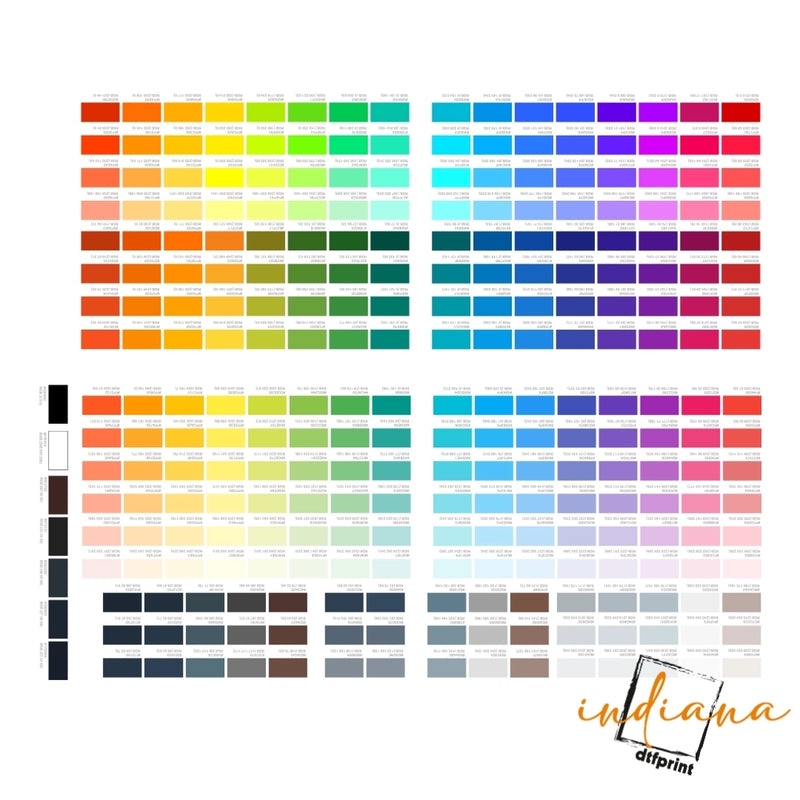Whether it’s Valentine’s Day hoodies or Halloween tees, seasonal apparel sells. But here’s the catch, if you’re not ahead, you’re behind.
In DTF printing season trends, prepping for seasonal demands can make or break your year. From managing inventory to creating trend ready designs, timing is everything.
Let’s dive into how to master seasonal DTF transfer prep so your business thrives all year long, without the last minute stress.
1. Build a DTF Printing Calendar
Every successful DTF business runs on a calendar. It’s not just about knowing when the dtf holiday prep checklist hit, it's about prepping weeks (even months) in advance.
Start by mapping out the big six: Valentine’s Day, Easter, Independence Day, Halloween, Thanksgiving, and Christmas dtf transfers. Then fill in others like graduation season, Pride Month, back to school, and niche events.
By following a DTF printing calendar, you give yourself time to design, produce, and market before customers start shopping.
2. Start Your DTF Seasonal Planning Early
If you're prepping Halloween shirts in October, you're late. Most big sellers begin production two to three months in advance.
Here’s a simple seasonal prep timeline:
- 2–3 months before: Design and mockups
- 1 month before: Print and stock up
- 2 weeks before: Launch and market
- After: Review and restock for late buyers
Seasonal DTF transfer prep isn’t about being perfect, it’s about being ready.
3. Manage Seasonal Inventory with Purpose
Overprinting wastes money. Understocking costs sales. The sweet spot? An inventory system that adapts to seasonal trends.
Use past sales data, current trends, and your calendar to anticipate how many transfers to print per design and size.
Pro tip: Keep a mix of ready to press designs and blanks so you can pivot if something unexpectedly takes off.
With smart DTF seasonal inventory planning, you won’t panic when demand spikes.
4. Create a Seasonal Design Bank
Ever had a design idea too late? Build a digital folder or cloud drive of seasonal DTF transfers ideas. Sketch, save, and organize by holiday or event.
You’ll always have a head start and can update styles with current trends.
Also, save reusable elements like fonts, graphics, and layouts. This makes creating future seasonal collections faster and more cohesive.
5. Use Seasonal Downtime to Prep for the Next Rush
Sales may dip after peak seasons, but that’s prime time for year-round DTF printing prep. Use this time to test new materials, organize your heat press setup, or build mockups for next quarter.
Staying stocked with dtf transfers for holidays during off seasons builds momentum and consistency in your business.
Conclusion
Your best sellers shouldn’t be rushed, they should be planned.
Preparing dtf transfers for holidays seasonal transfers entails maintaining your company innovative, well-organized, and competitive. You may give people what they want before they even realize it if you have the correct tools and approach.
Stay ready. Stay creative. And let the seasons work in your favor with Indiana DTF Print.
Frequently Asked Questions
1. How far ahead should I prep seasonal DTF transfers?
Aim to begin your seasonal DTF prep 2 to 3 months in advance. This allows time for design, testing, inventory, and marketing without last minute stress.
2. What’s the best way to manage seasonal stock?
Use historical data and trends to guide how much to print. Start with low to mid runs, and restock fast selling designs using print on demand if needed.
3. Should I create designs for every holiday?
No, focus on holidays your audience celebrates most. More important than quantity are timeliness and quality. With a more focused and smaller audience, niche events can yield significant profits.
4. How can I avoid overproduction during holiday seasons?
Pre sell popular designs or offer “made to order” options. Combine this with limited ready to press stock to balance urgency and sustainability.
5. What tools help with year round DTF planning?
Create seasonal campaign maps using Trello, Notion, or Google Calendar. To inform future choices, use inventory applications or spreadsheets to keep track of previous sales.











